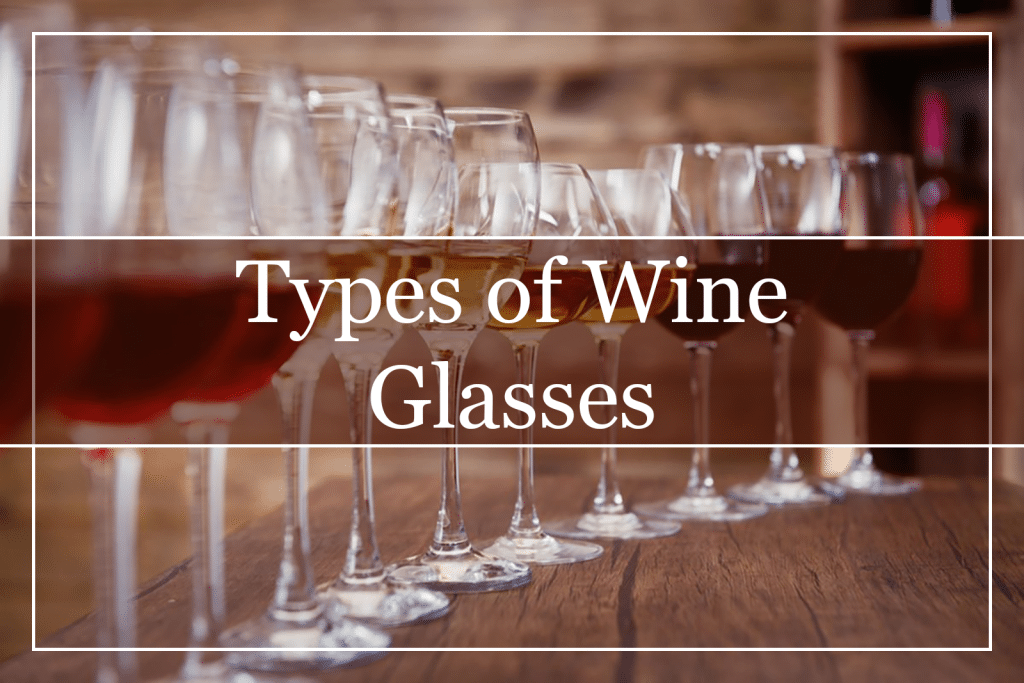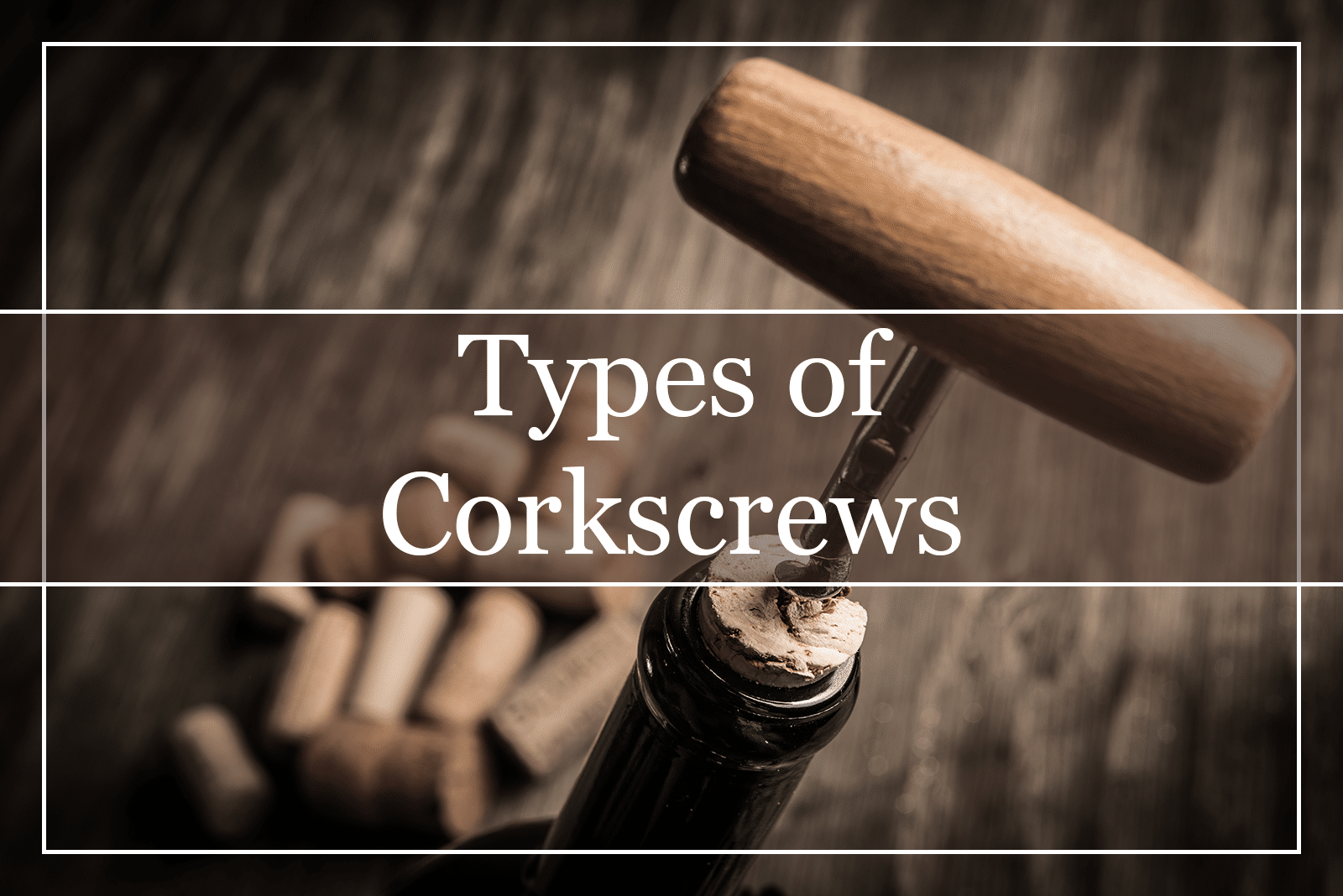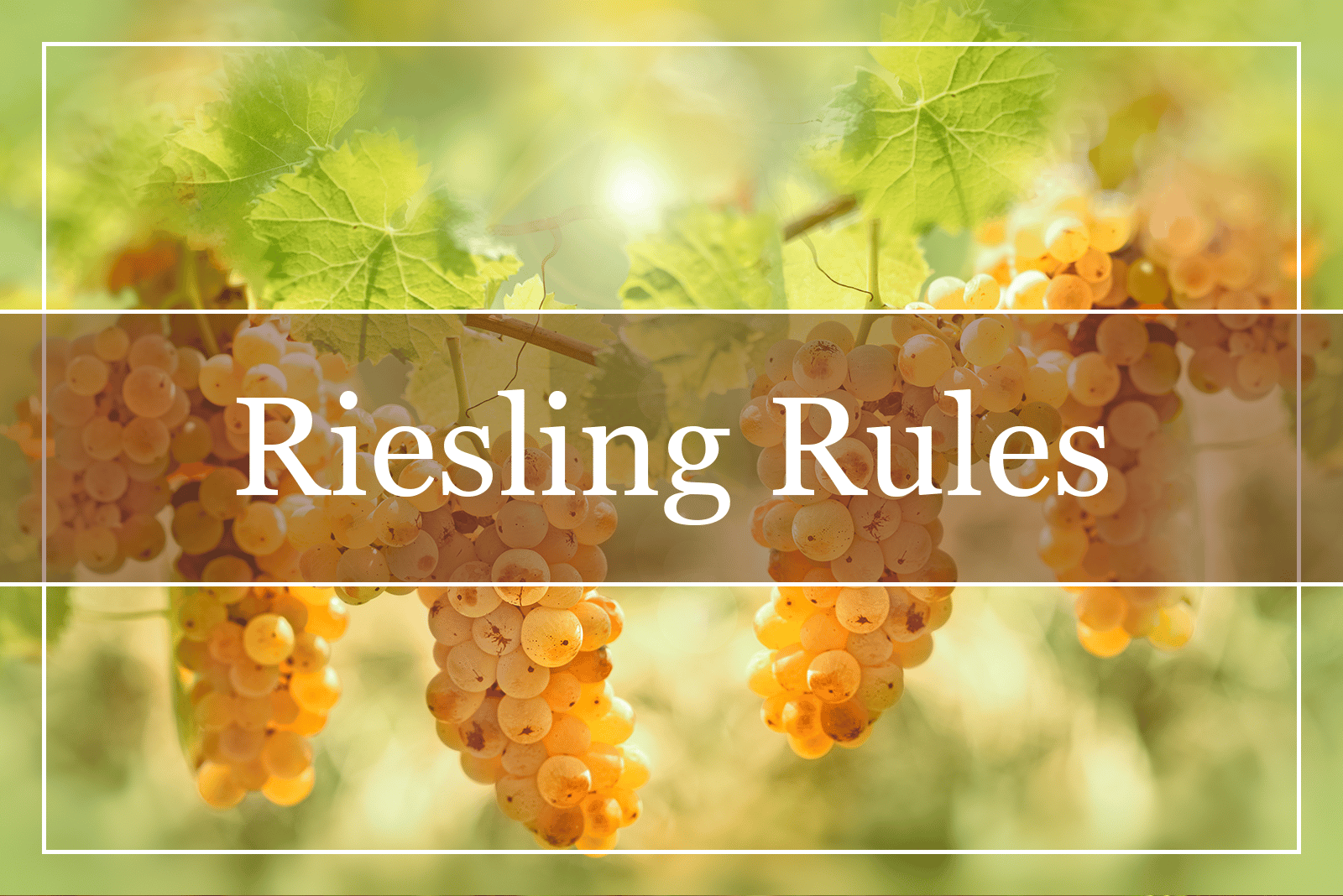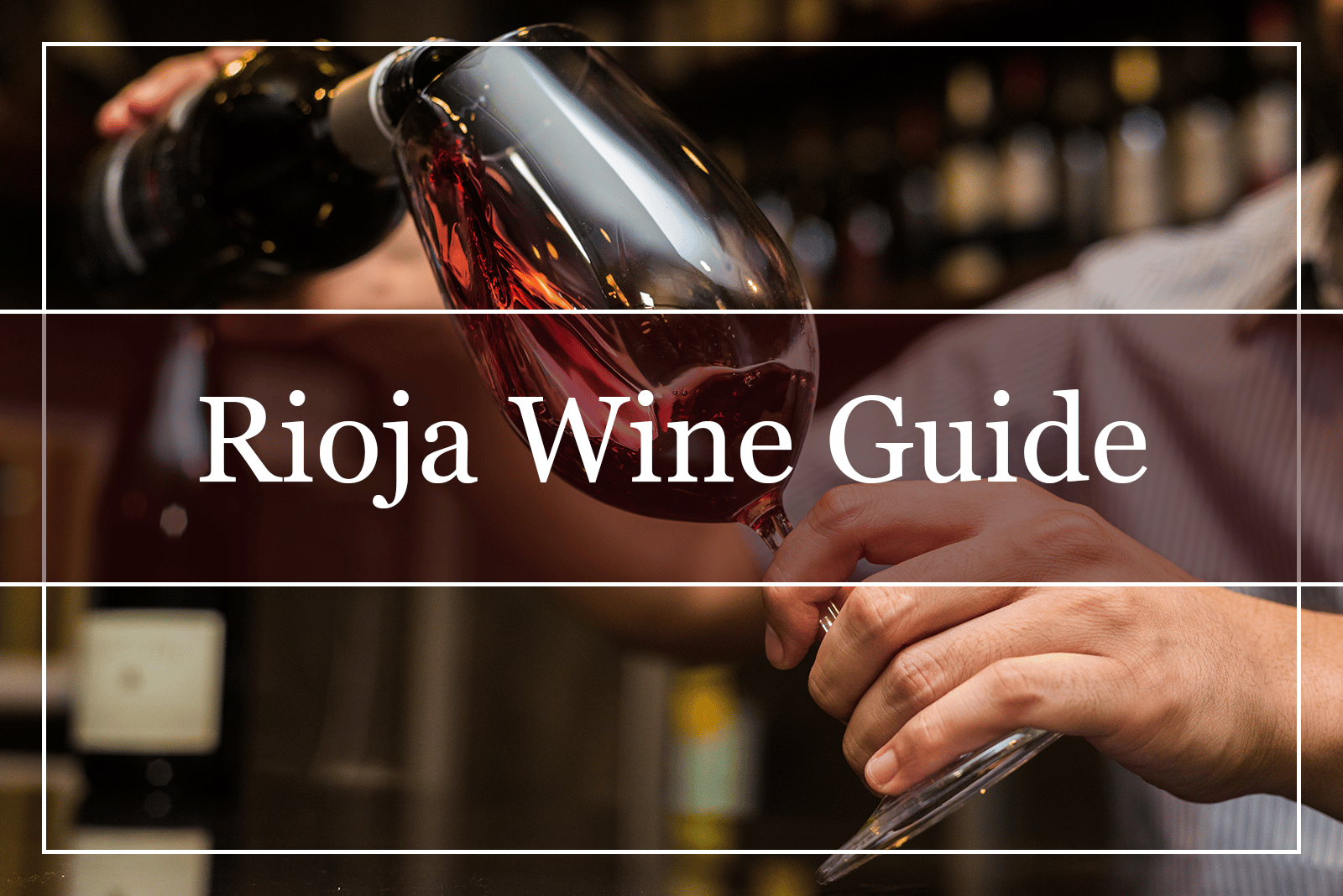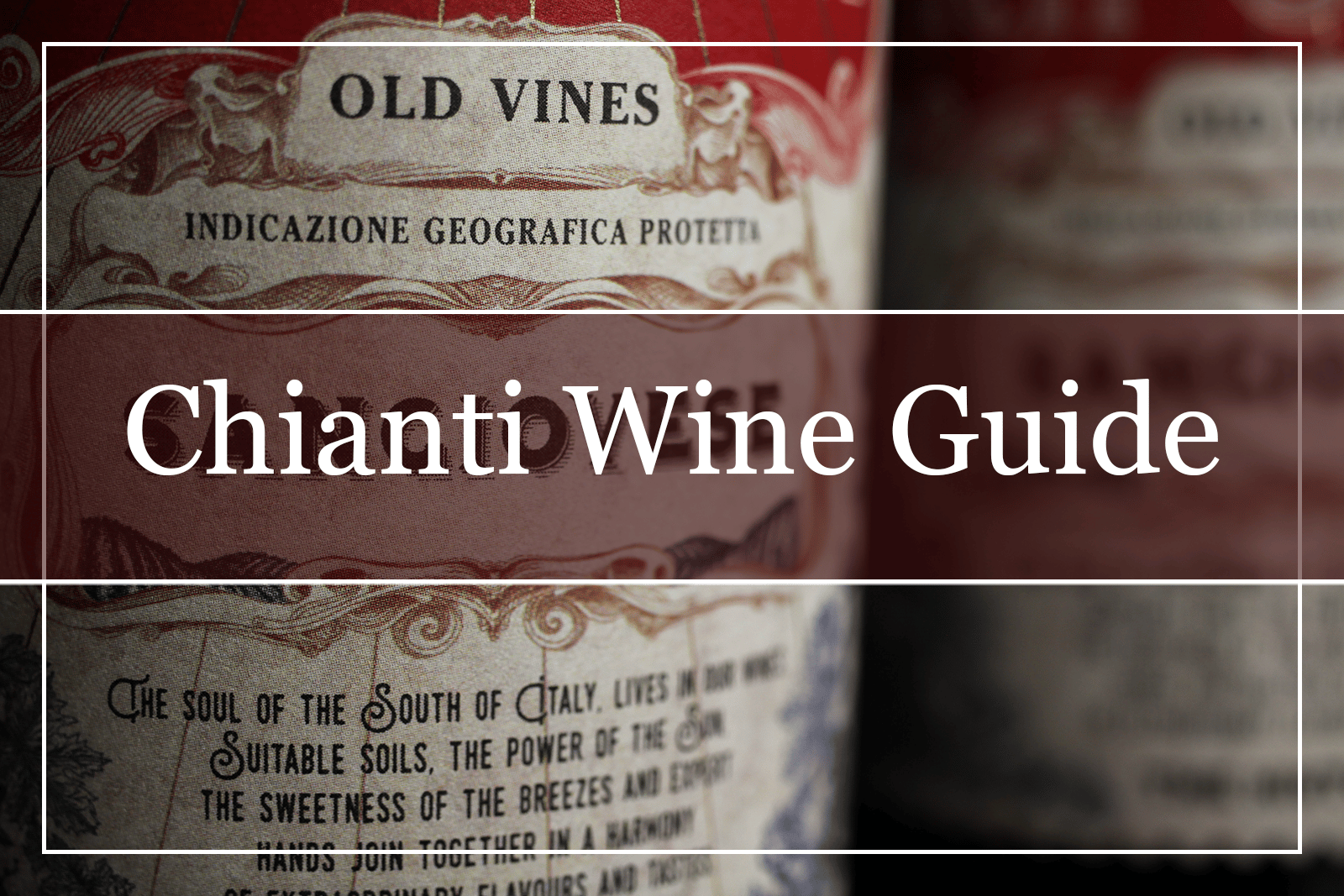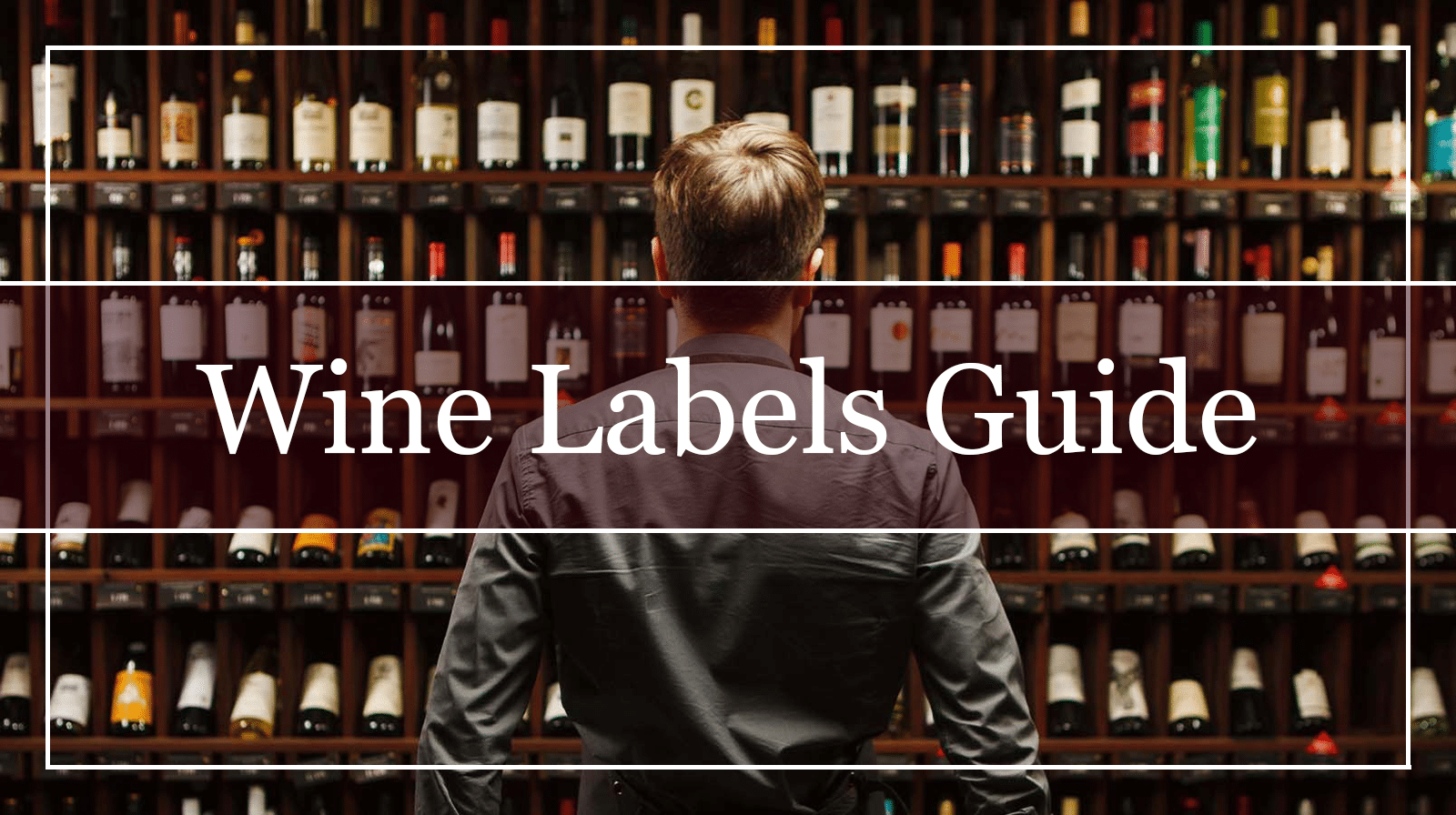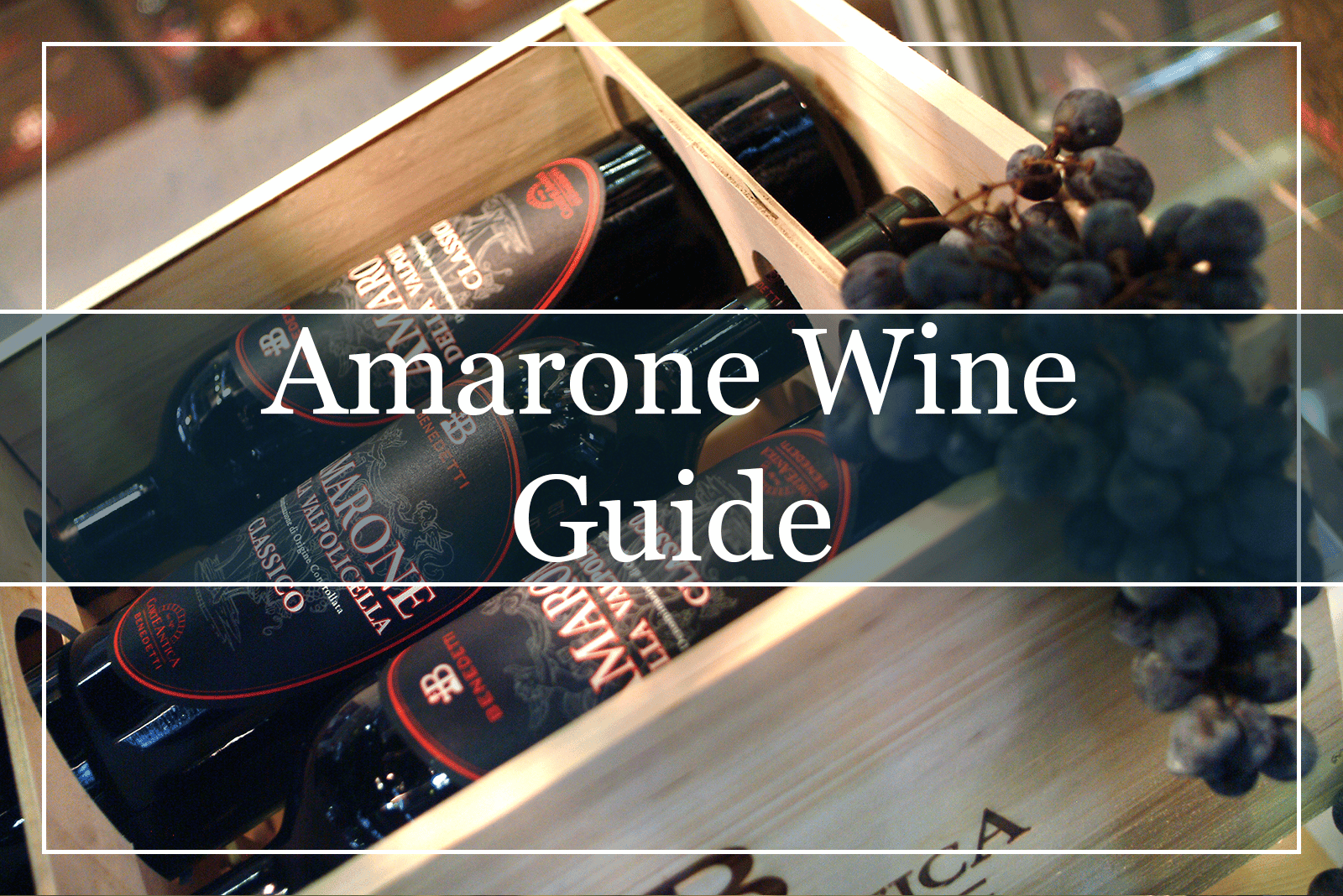There are traditions to follow when pouring wine. Each wine deserves to be celebrated in a glass that is perfectly designed to bring out its unique characteristics.
You may have noticed how some wines taste different in different glasses. With the right kind of glass, you will discover flavors in the wine that went unnoticed before.
While figuring out the correct type of glass to pair with your wines can feel daunting, it doesn’t have to be. This article answers all the frequently asked questions about wine glasses and provides all the necessary information to elevate your wine tasting experience to a new level.
Do You Need a Wine Glass to Drink Wine?
Well, you can drink wine straight out of a bottle or pour it into any cup or glass for convenience.
While it is, of course, your personal taste that determines how you want to drink your wine, here are some general rules to help you. However, research shows that swirling wine in a glass with an increased surface area optimizes the level of aromas released during consumption.
To truly revel in the nuance of flavors and appreciate the superb elements of the wine, investing in wine glasses is always worthwhile.
What Are Wine Glasses Called?
Wine glasses are designed to optimize the flavors of different types of wine, and thus, they have specific names.
- Red wine glasses have been divided into two subcategories:
- Bordeaux and Cabernet wine glasses that are suitable for dark red wines with robust flavors.
- Pinot Noir and Burgundy glasses are perfect for lighter wines with delicate flavors.
- White wine glasses are slim with long stems so that the hand does not warm the wine in the glass. The two subcategories in white wine glasses include:
- Glasses with a slightly larger opening that help you capture the crisp and fresh flavors of a young white wine.
- Straight and tall glasses with small openings that push the flavors of the mature wine to the back and sides of your tongue.
- Sparkling wine glasses are called “flutes,” and they stand upright with a small, narrow rim.
- Dessert wine glasses are small and referred to as “sippers.”
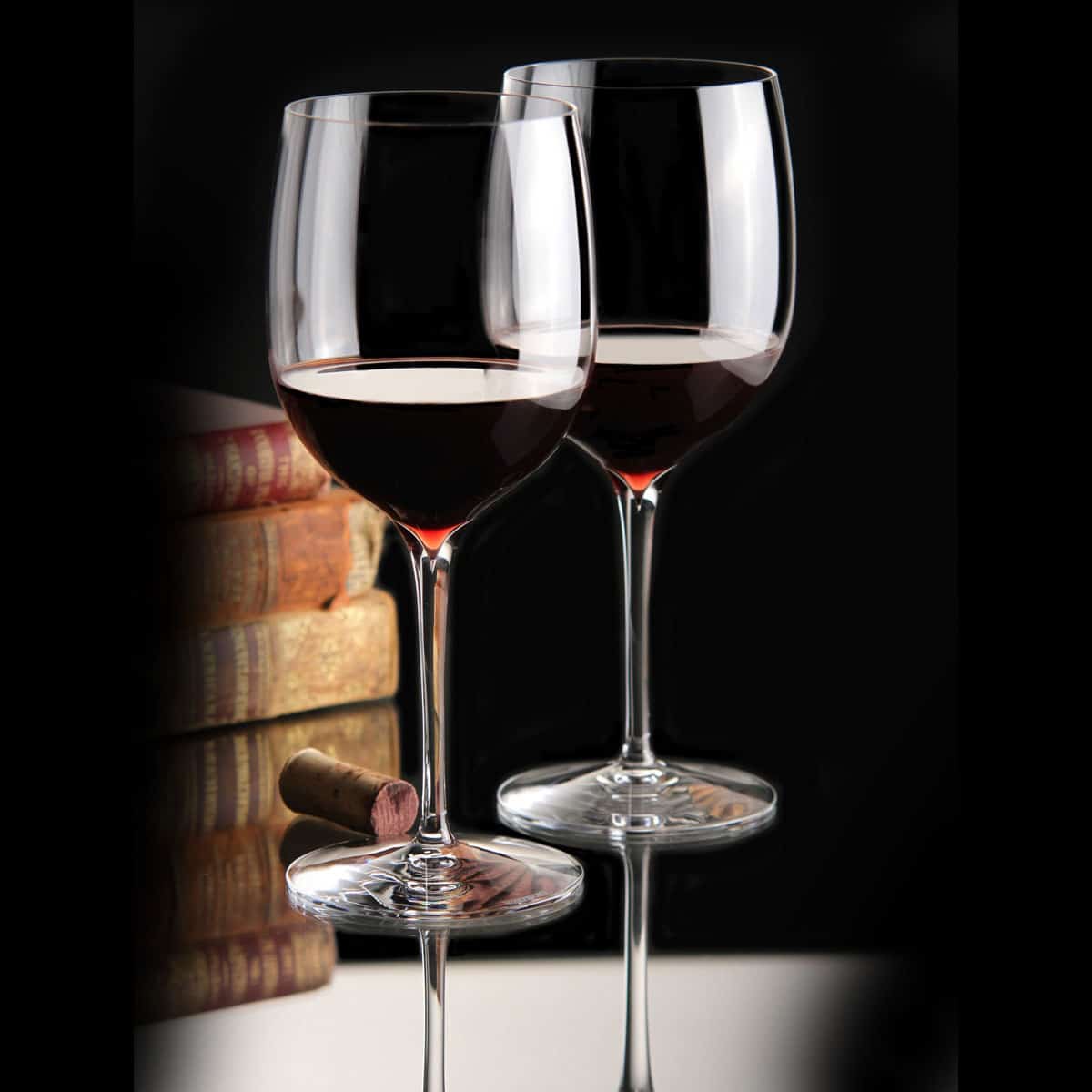
What Is the Standard Size for a Wine Glass?
The average wine glass is about 6-10 inches tall.
A typical red wine glass is about 8 inches tall, a white wine glass 6–7 inches, and a port or sherry glass is usually 5-6 inches tall.
According to the International Organization for Standardization, the dimensions of a standard wine tasting glass would have an overall height of 155 mm, a 46 mm rim, a 65 mm bowl, a 55 mm stem, and a 65 mm base.
Around the rim, the thickness of the glass would be 0.8 mm.
Why Are Wine Glasses So Thin?
The shape of a wine glass contributes to the look, smell, and taste of the wine.
When the air comes into contact with the wine, the thinness of the glass helps accentuate the acidity and the color of the wine. So when you drink the wine, its flavors and aroma are easily transferred into your nose and mouth, making you relish the wine more.
It also feels elegant, as stated by Maximilian Riedel, the CEO of Riedel Crystal. He claims that “The pleasure comes from holding something very light in your hand.”
The wine glass is thinner at the rim than at the bowl to avoid spilling wine when you take mouthfuls of it. Also, the traditional clink before you drink is possible only when the top-quality glass has been used.
How Wide Is the Bottom of a Wine Glass?
The bottom of a wine glass is called the base. If you want to place your glass on a flat surface, the base helps keep the glass upright.
It is designed in this way to support the weight of the stem and the bowl while keeping the glass upright. The base is usually around 3 inches wide.
Stemless glasses do not have a separate base.
What Size Is a Large Glass of Wine?
Studies have revealed that the size of the wine glass has grown sevenfold in the last three centuries.
A large serving would involve 250 ml of wine in a glass. So you’d get about three large glasses of wine from a standard wine bottle.

How Many Glasses of Wine Do You Get From a Bottle?
Most wine bottles contain 750 ml of wine, which amounts to 25.3 ounces.
A standard pour of wine is usually five ounces for most wines. This amount of wine in the glass is perfect as it allows the wine to breathe and you benefit from the depth of its flavors.
Therefore, you can get up to five glasses of wine from one wine bottle.
However, wine bottle sizes such as Magnum (1.5 liters), Jeroboam (3 liters), and Imperial (6 liters) can fill many more glasses.
There also exist sizes like the Nebuchadnezzar bottle that holds about 15 liters, the Solomon bottle (Melchior) that contains 18 liters of wine — which translates to roughly 24 standard wine bottles or two full wine cases.
How Many Types of Wine Glasses Are There?
Interestingly, there are 18 different types of wine glasses, each one specifically designed to enhance the special properties of the wine you serve.
Red Wine
- Cabernet: This tall glass intensifies the smell of the wine. The wide bowl allows for adequate breathing, and the narrow mouth helps capture the wine’s aroma.
- Burgundy: This glass has a very wide bowl that accommodates the aroma of delicate wines, resting on a short stem.
- Bordeaux: Tallest red wine glass with smaller bowls that enable the wine to travel to the back of your mouth.
- Zinfandel: The bowl is smaller than the Bordeaux or the Cabernet glass; it is shorter and has a slightly larger rim than the Bordeaux glass.
- Pinot Noir: Widest glasses with shorter stems; the rim is turned out from the glass.
- Rosé: Long-stemmed glasses that have a short bowl and flared lip/short taper.
White Wine
- Chardonnay: A fairly large “U” shaped bowl with a slightly narrow top and a larger opening than the Pinot Noir.
- Sparkling: Completely upright with a narrow bowl and a wide base.
- Vintage: Extremely short, wide bowls made of plain glass, cut crystals, etc.
- Rosé White: Long-stemmed glasses with short bowls and flared lip/tapers.
- Viognier: Small bowl with an adequately open rim and a broad base.
- Sweet Wine: Small glasses with a tapering, small rim.
Other Wine Glasses
- Flute: Narrow wine glass; tall with a long, elegant stem.
- Balloon: Versatile wine glasses with a long stem and large opening.
- Stemless: With no stem, the bowl is held within the palm of the hand.
- Aerating: Short, wide bowl with large opening and a moderately sized stem.
- Port: Similar to the Bordeaux glass, but smaller and thinner.
- Sherry: Resembles port wine glasses; with a long stem, a small opening, and a wide base.
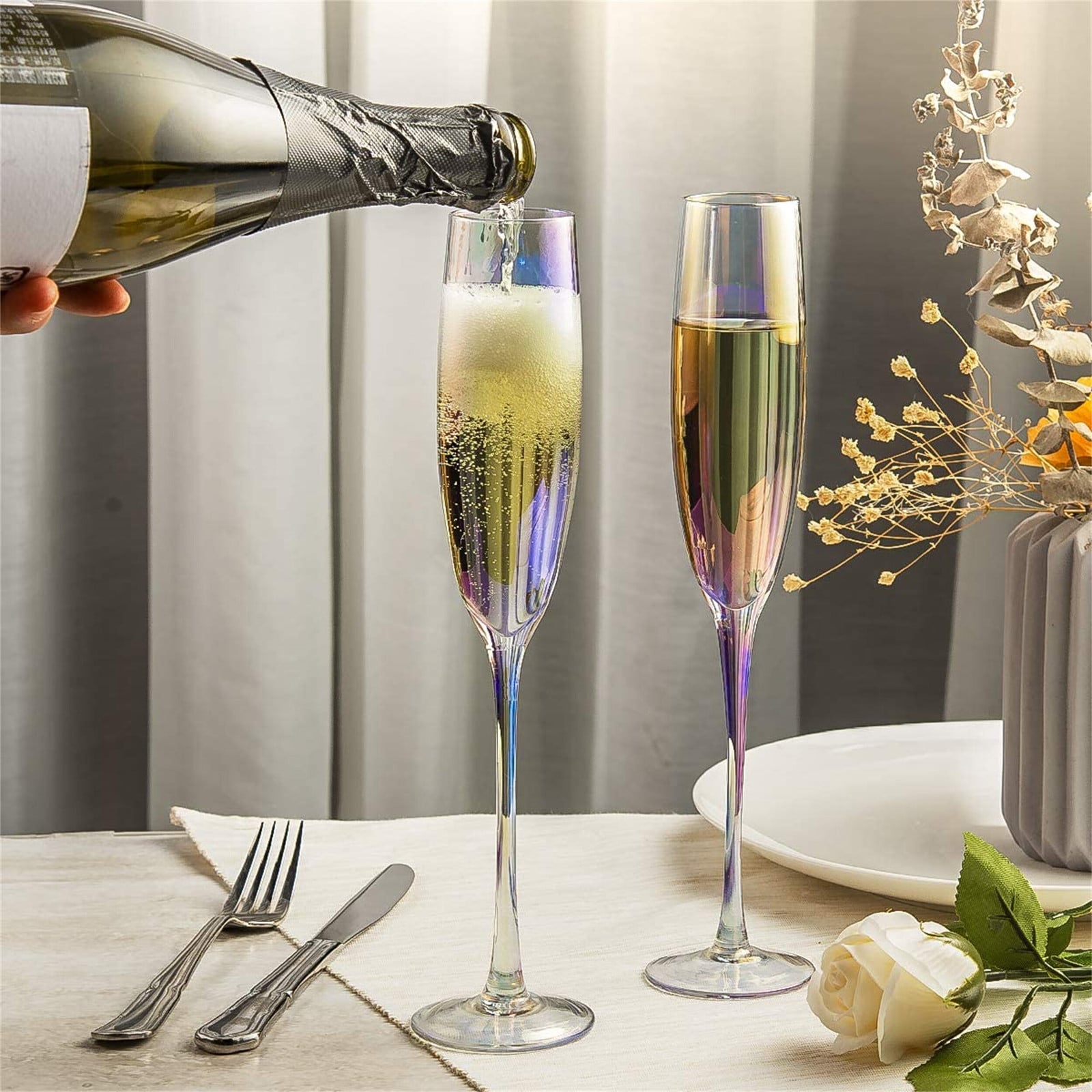
What Is the Correct Wine Glass to Use?
The classification of wine glasses should help determine which glass is best suited to your wine. The correct wine glass will bring out the best of your wine.
Michael Steinberger, award-winning wine columnist of Slate magazine from 2002 to 2011, raved about his experience of drinking from the Riedel Burgundy glass while tasting the 1988 Domaine de la Romanee-Conti Romanee St. Vivant.
Red Burgundy has an acidic taste, so the brand has designed a glass that steers the wine away from the side of your tongue where your taste buds are most sensitive to acids. So, the wine flows towards the middle of your mouth. This would also apply to other highly acidic wines since the shape of the glass helps guide the wine across your mouth palate.
If you do not possess these special wine glasses, you can’t go wrong with the universal wine glass. They have medium-sized bowls and tapered rims that aerate your wine and allow you to enjoy the delicate aromas.
What Is the Correct Glass for Red Wine?
Bordeaux glasses are large and perfect for bold red wines such as Cabernet Sauvignon, Cabernet Franc, and Bordeaux blends. Their large surface area helps the ethanol evaporate, allowing you to inhale the rich, fruity aromas. The wide opening of the glass softens and smooths the flavors of the wine.
For full-bodied red wines, standard red wine glasses help soften the spiciness by having a smaller opening. Wines like Shiraz and Zinfandel work best with this glass.
For delicate red wines, large and round bowls help gather and deliver the aromas. This type of glass pairs well with wines such as Pinot Noir, Nebbiolo, Schiava, and St. Laurent.
What Is the Correct Glass for White Wine?
White wine glasses are U-shaped, upright, and their bowls are smaller. This helps preserve floral aromas, balance the acidity, and maintain cool temperatures.
Light-bodied white wines can be served in taller glasses, while their full-bodied counterparts work best in shorter glasses with larger bowls. The latter includes the likes of White Rioja, Viognier, and Chardonnay for example.
Why Is a Red Wine Glass Bigger?
Red wines are full of rich flavors that need to breathe once they are released from the bottle. By being spread across a larger surface area inside a wine glass, they enable better aeration.
You’ll notice that most red wine glasses have wide, bulbous bowls. This helps the wine come into contact with air and the complex aromas are funneled up to the nose.
The bitterness of high tannin wines and the spicy flavors are moderated by these glasses.

How Do You Hold a White or Red Wine Glass?
You’d hold a wine glass differently according to the wine’s ideal temperature and the stem of the glass.
Stemmed wine glasses need to be held at the base of the stem. Use your forefinger, middle finger, and thumb. Your other fingers will naturally rest on the base. You can also clasp the stem of the glass using your index finger and your thumb like a lever, holding it in place.
Most wines are best when served at temperatures below 65 ℉. Body temperature is 98.6 ℉ so you need to avoid the warmth of your palm increasing the temperature of the wine. Fingerprints on the bowl will also cloud the appearance of the wine.
If your glass is stemless, you can hold it any way you like.
What Type of Glass Do You Drink Rosé From?
Tulip-shaped or diamond-shaped glasses enhance the features of a Rosé. The fruity flavor and fresh aroma of the wine rise towards the rim of the glass.
You can also use white wine glasses as the tapered rim brings the wine to the tip of your tongue which enables you to relish its sweetness and acidity.
What Kind of Glass Should You Drink Moscato In?
Moscato is made using Muscat grapes and has strong citrus notes, such as orange and lemon, making it quite acidic. Fruity varieties of Moscato made of honeysuckle and melons are also famous.
Sweet Moscato can be served in classic white wine glasses, as the wide opening would tip the wine towards the sides of the tongue and enhance its sweetness. The sparkling variety is best served in champagne flutes.
What Glass Do You Serve Dessert Wine In?
Dessert wines are sweet wines that are fortified and paired with desserts. These include Port, Riesling, Moscato, Lambrusco, etc.
As dessert wines tend to be quite sweet, they can overwhelm the palate. So, the best dessert wine glasses would be ones that are compact in size with narrow tapers that can help to accentuate their aroma and flavors. These wines are best sipped and savored.
Why Is a Dessert Wine Glass Smaller Than White Wine Glasses?
Dessert wines have a higher alcohol content than most other wines, hence the glasses are smaller than white wine glasses.
The shape of the glass allows for the wine to first travel to the back of your mouth so you can swish it around and get a mouthful of its sweetness.
Does the Glass Matter While Drinking Wine?
Almost 80% of our ability to taste depends on our noses — we need to inhale the aromas and interpret them. To truly appreciate wine, you need to swirl it, and the type of glass you hold determines whether the wine will breathe adequately.
Different kinds of wine can be enhanced to perfection by drinking from glasses that are specifically designed for that wine type. If you aren’t able to invest in a cabinet of drinkware, you can always opt for the universal wine glass.
It is an adequate one-size-fits-all approach that will enhance the drinking experience of most wine types.
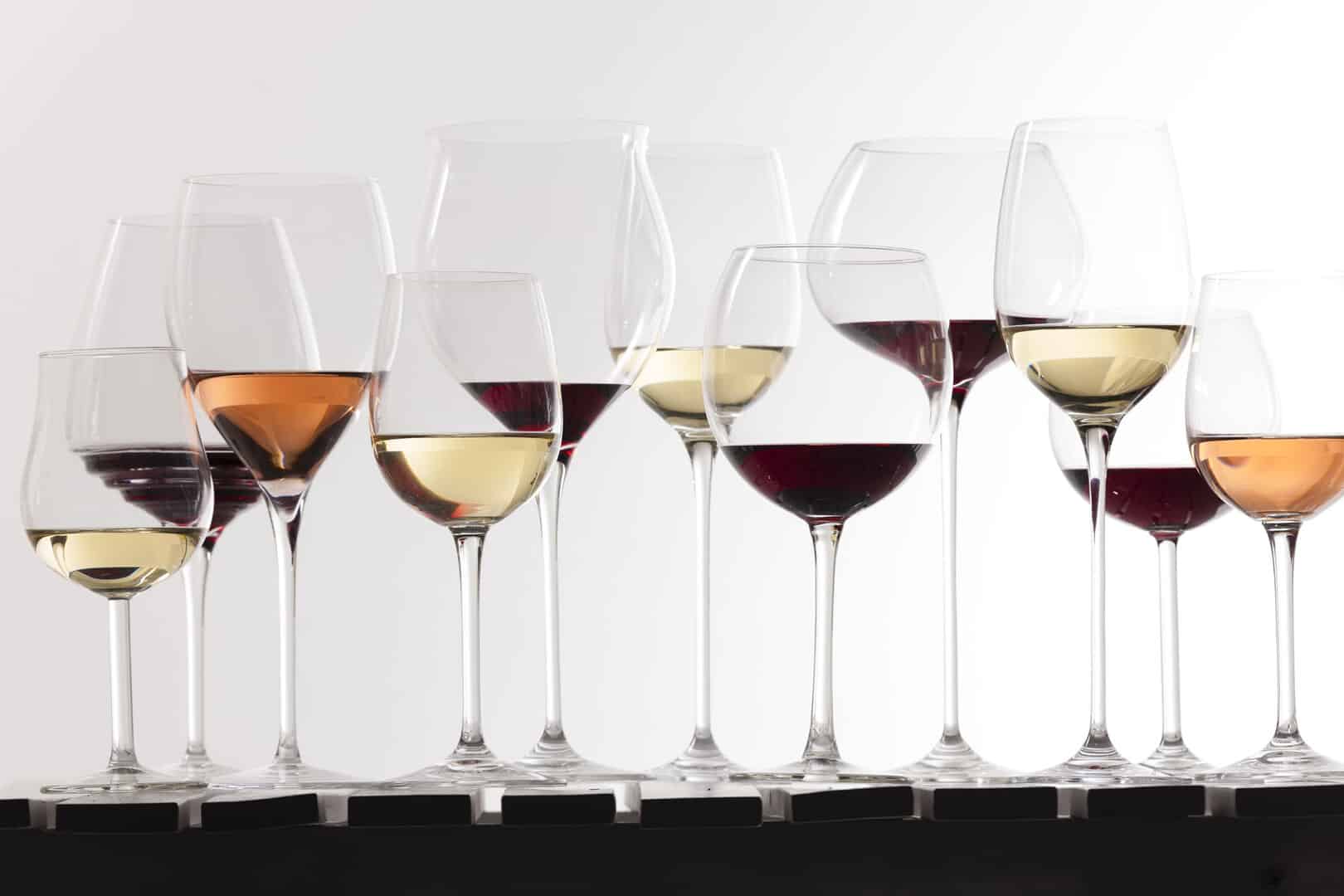
How Can You Tell the Quality of a Wine Glass?
Three aspects can determine the quality of a wine glass:
Material
Wines are usually best consumed from crystal glasses. Wine glasses made using plastic and cheap materials like soda-lime glass, lack the texture to complement the wine.
You may also notice bubbles or a blue-green tint in your wine while using glasses made of unrefined raw materials. Crystal glasses contain 2-30% minerals; they are smooth, durable, and unlikely to chip or crack.
Patterned or overly embellished wine glasses take away from the elegance of your experience of observing the wine. And when offering a toast, the perfect ringing sound (bell-like sound) is possible only with crystal glasses.
Color
One of the first things you notice through your glass is the color of your wine. It is the foremost step in the experience of drinking wine.
Using transparent glasses helps judge your wine’s color and clarity.
Thickness
The perfect wine glass is designed in a way that allows the wine to flow over your tongue. A slim wine glass lets your wine react explosively with your taste buds after it has sufficiently been aerated in the glass.
An overly-thick rolled rim, on the other hand, may cause spillage. Laser-cut rims ensure that the wine is ingested properly. Crystal wine glasses can be blown to very exacting standards, thus allowing the glass to be designed with a heavy base and a perfectly balanced bowl.
What Determines the Price of a Wine Glasses?
While most glasses are manufactured using machines and are about $15 to $30 per stem, those made of crystal are more expensive. The finer the crystal, the higher the price.
Handcrafted wine glasses that are made using blown lead crystal are thought to intensify the drinking experience as they are specifically designed to enhance the property of the wine.
For example, Riedel’s wine glass collection is fine-tuned to enhance the grape’s properties and crafted in a way that seamlessly directs the best parts of the wine into your mouth first. Founder George Riedel says, “We’re dealing with physics.”
What Is the Most Expensive Wine Glass?
Costing a whopping $400,000, the most expensive wine glass in the world is a champagne glass called the Diamond & Crystal Champagne Glass.
The creation of designer John Calleija, the pair of glasses was made using eight blocks of rock quartz crystal, encrusted with 15 carats of white diamonds and six carats of rare argyle pink diamonds. About 1,700 diamonds embellish the 15cm tall glasses which weigh 250 grams each.
These glasses were purchased by an anonymous Australian businessman who has now made them a family heirloom.
Conclusion
We hope to have shed light on the mysteries of wine glasses, and how to choose the best type to match your wine. Take your appreciation of wine to a whole new level by selecting the perfect wine glass to be the vessel for your favorite tipple!

